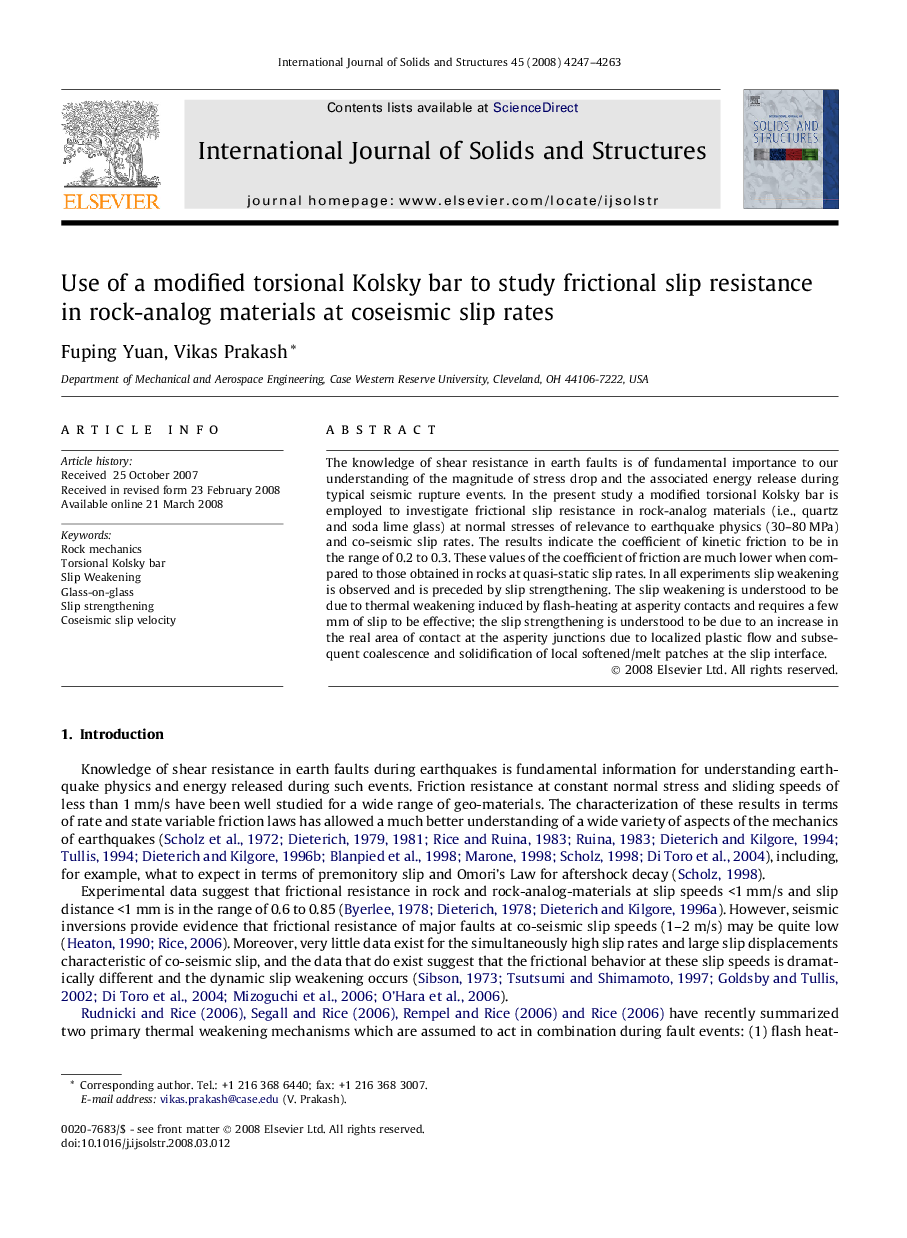| Article ID | Journal | Published Year | Pages | File Type |
|---|---|---|---|---|
| 279314 | International Journal of Solids and Structures | 2008 | 17 Pages |
The knowledge of shear resistance in earth faults is of fundamental importance to our understanding of the magnitude of stress drop and the associated energy release during typical seismic rupture events. In the present study a modified torsional Kolsky bar is employed to investigate frictional slip resistance in rock-analog materials (i.e., quartz and soda lime glass) at normal stresses of relevance to earthquake physics (30–80 MPa) and co-seismic slip rates. The results indicate the coefficient of kinetic friction to be in the range of 0.2 to 0.3. These values of the coefficient of friction are much lower when compared to those obtained in rocks at quasi-static slip rates. In all experiments slip weakening is observed and is preceded by slip strengthening. The slip weakening is understood to be due to thermal weakening induced by flash-heating at asperity contacts and requires a few mm of slip to be effective; the slip strengthening is understood to be due to an increase in the real area of contact at the asperity junctions due to localized plastic flow and subsequent coalescence and solidification of local softened/melt patches at the slip interface.
